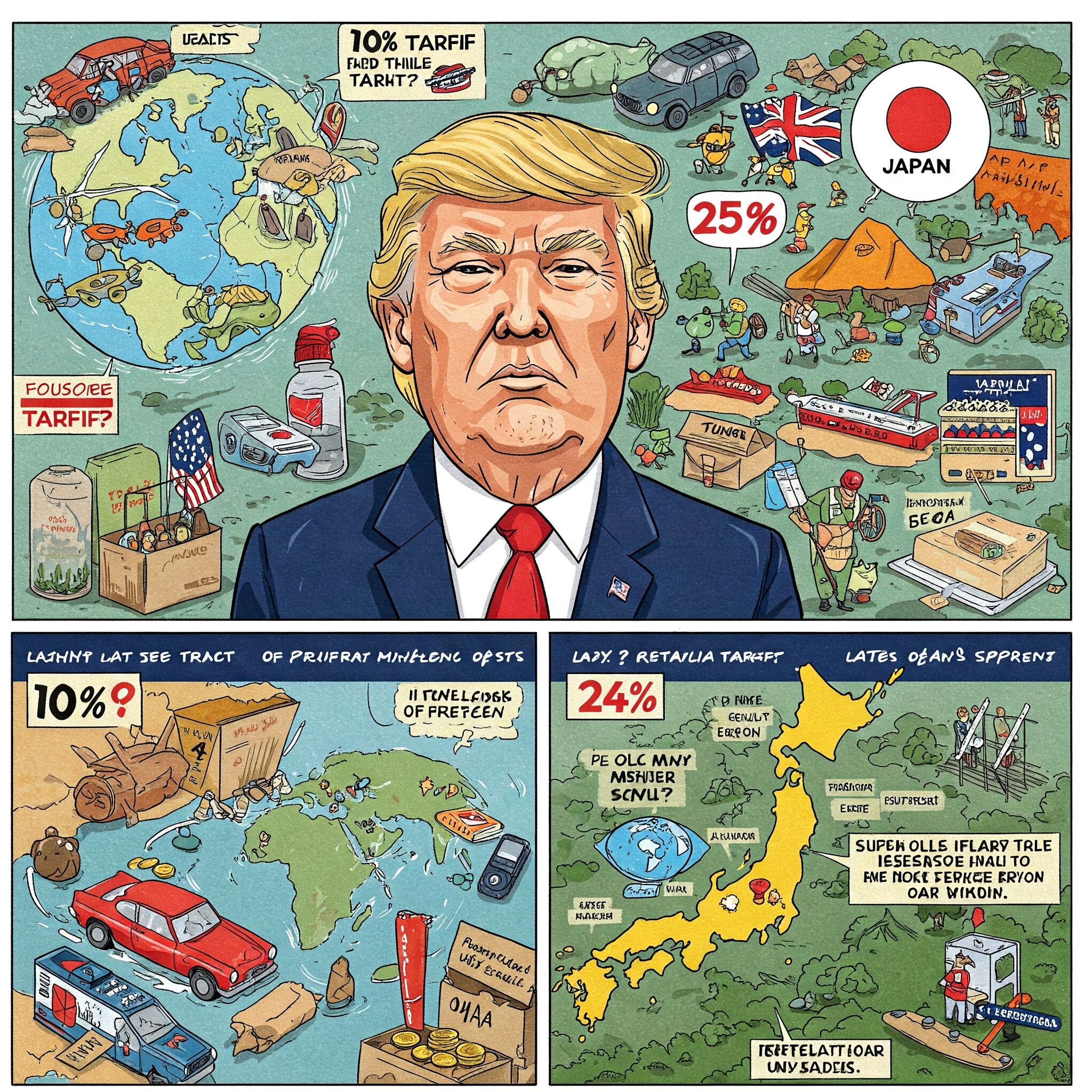On April 2, 2025, President Trump’s announcement of “reciprocal tariffs” sent shockwaves through the global economy. This new policy imposes a uniform 10% tariff on all countries and regions, with a particularly high 24% tariff targeted at Japan. Such developments not only impact trade policies but also significantly influence corporate patent strategies. This article explores the reasons why patents have become critically important within the context of these trade policies and offers a fresh perspective on the topic.
What are Reciprocal Tariffs?
Reciprocal tariffs, introduced by the Trump administration, are tariffs adjusted to match the tariff levels set by other countries. Through this policy, the United States aims to reduce its trade deficit and protect domestic industries.
Japan, in particular, faces a substantial 24% tariff, which is expected to heavily impact industries like automotive manufacturing. Behind this economic measure lies a critical connection to intellectual property rights, specifically patents, which must be understood clearly.
The Deep Relationship between Tariffs and Patents
While tariffs directly influence the trade of physical goods, the competitiveness of businesses often hinges upon their patents. Patents enable companies to prevent competitors from easily replicating their products, thereby maintaining market dominance.
When reciprocal tariffs are introduced, export costs rise significantly. In such a situation, it becomes difficult for companies to compete solely based on pricing. Therefore, the added value provided through technological innovation becomes increasingly critical. Patents protect this added value, and as tariffs increase, the relative importance of patents also rises.
Patent Strategy Protecting Market Presence
For example, Subaru, a significant player in Japan’s automotive industry, manufactures a large portion of its vehicles for the American market in Japan. Rising tariffs inevitably increase export costs, thereby reducing profitability. However, Subaru’s patented technologies—such as safety innovations, fuel efficiency, and environmental performance—provide substantial product differentiation. The stronger the differentiation achieved through patents, the more likely consumers are to recognize this value and continue purchasing despite price increases.
In other words, holding patents allows companies to partially absorb tariff impacts and maintain competitiveness. Conversely, businesses without patents or those with weaker patent strategies face higher risks, potentially leading to withdrawal from the market.
A New Perspective: International Utilization of Patents
Traditionally, many companies focused on protecting their patents within domestic markets. Moving forward, however, international patent strategies will become more vital. For companies aiming to enter the U.S. market, obtaining local patents and offering products based on these patents will be crucial in overcoming tariff barriers.
Additionally, international patent utilization, such as licensing income and technological partnerships, will emerge as fundamental components of business models. Companies holding strong patents may be able to offset negative impacts from tariffs through technology transfers or licensing revenue streams.
Conclusion: Reconsidering Patent Strategies
With President Trump’s implementation of reciprocal tariffs, many Japanese companies face new challenges. However, this also represents an ideal opportunity to reevaluate and strengthen their patent strategies fundamentally. Securing and leveraging patents can help businesses overcome tariff barriers and maintain international competitiveness.
Going forward, it will be crucial to monitor how companies adapt their patent strategies and sustain competitive advantages in response to these new trade dynamics.


コメント